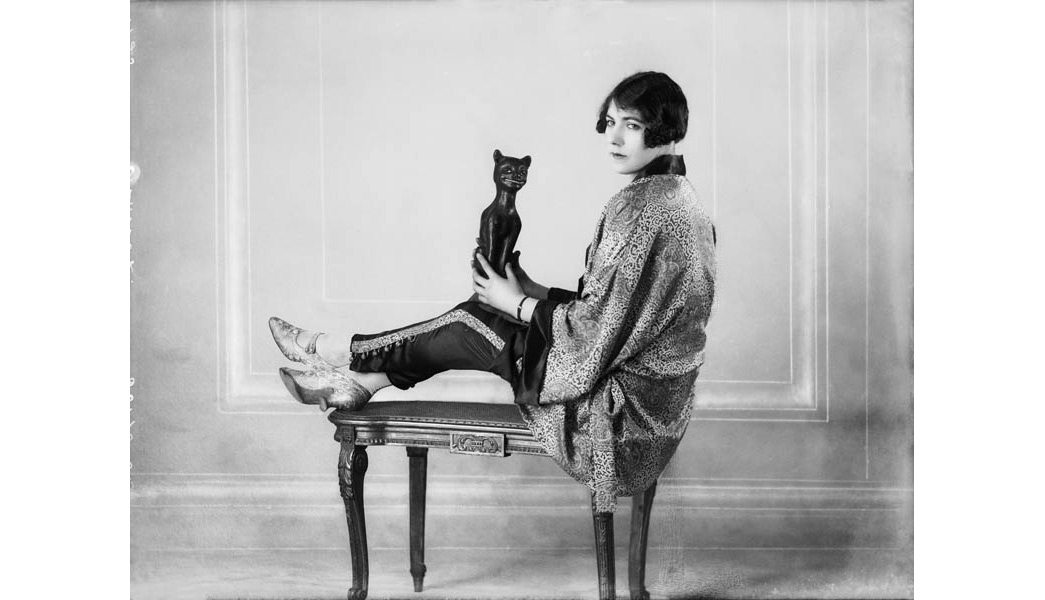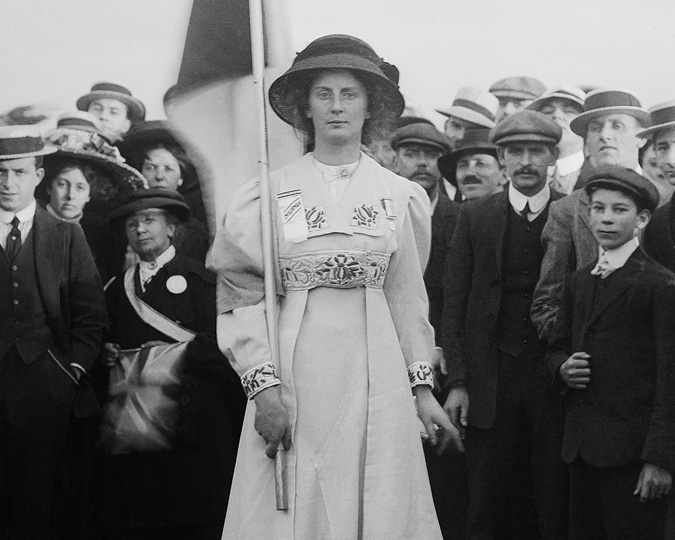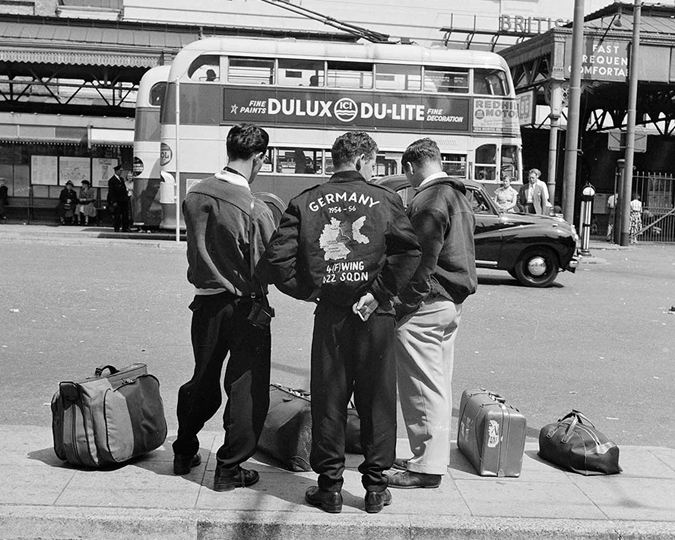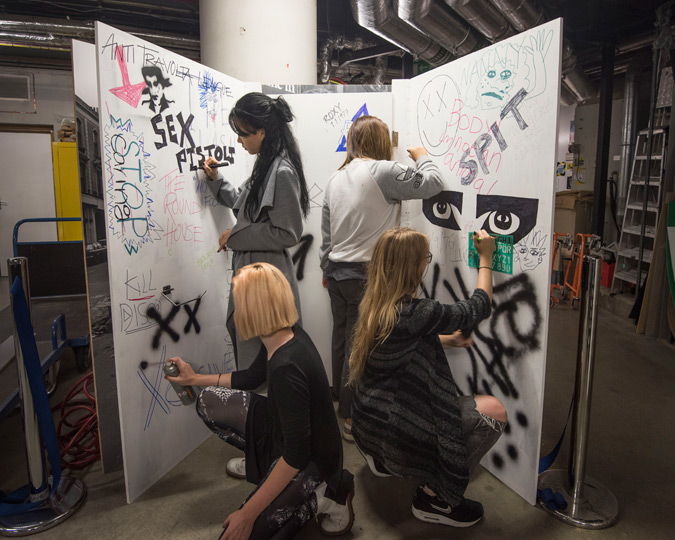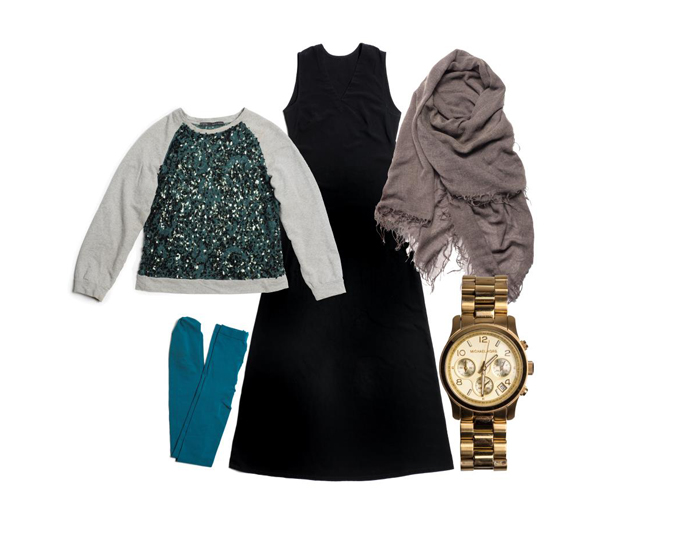People are mocked today for heading to the supermarket in their pyjamas, but nightwear was once the latest word in fashion. Curator Beatrice Behlen reveals the curious craze for pyjamas in the 1920s and 30s, through the costumes of one particularly chic actress, Hilda Moore.
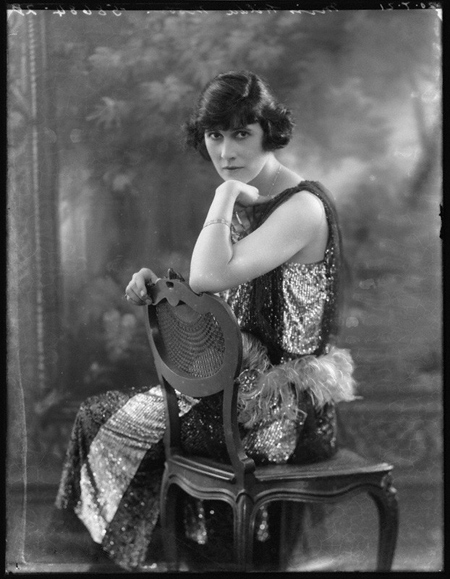
Hilda Moore
By Bassano Ltd, 1921. © National Portrait Gallery, London, CC BY-NC-ND 3.0.
Why must Miss Hilda Moore always wear pyjamas?
Hilda Moore’s penchant
for pyjamas was questioned by Richard Jennings, the theatre critic of The Spectator
on 12 February 1927. Since 29 January Hilda Moore (born 1886 in London) had been appearing on the
stage of the St. James’s Theatre in Interference,
a play by Roland Pertwee and Harold Dearden, which was turned into an early
sound film or ‘talkie’ the following year. Hilda Moore (and in the film Evelyn
Brent) played Deborah Kane, a woman up to no good.
I will try to summarise the convoluted and – shall we say - somewhat improbable plot as it is told by Jennings. The story revolves around a Mayfair consultant, Sir John Marlay. Sir John receives a patient, Philip Voaze, in his consulting room who turns out to be Lady Marlay’s first husband. That would not be a problem had not Lady Marlay hoped and presumed her first husband dead. Voaze’s mistress Deborah Kane (Hilda Moore) is blackmailing Lady Marlay, which makes Kane the target for an unsuccessful attempt at poisoning by Lady M. In the end Miss Kane is killed by Voaze who - it turns out - had never loved anyone but his first wife (are you still with me?).
In Jennings’ opinion the plot was ‘of the very oldest and most creaky ingenuity’. Co-author Roland Pertwee had been sceptical himself when Harold Dearden, then a ‘fashionable psychiatrist’ with ‘ambitions [that] ran eagerly in the direction of writing’ had suggested it:
My first reaction to the idea, as he expounded it, was intense hostility, for every character was either a murderer, a blackmailer or a prostitute. [...] I remember attacking the whole fabric with indignation and, in seeking to make my point, throwing out numerous suggestions for putting at least a proportion of the characters on the side of the gods. [...] Dearden expressed the liveliest enthusiasm for my counter proposals and, by one in the morning, we had reconstructed the whole thing and were in a state of complete accord.
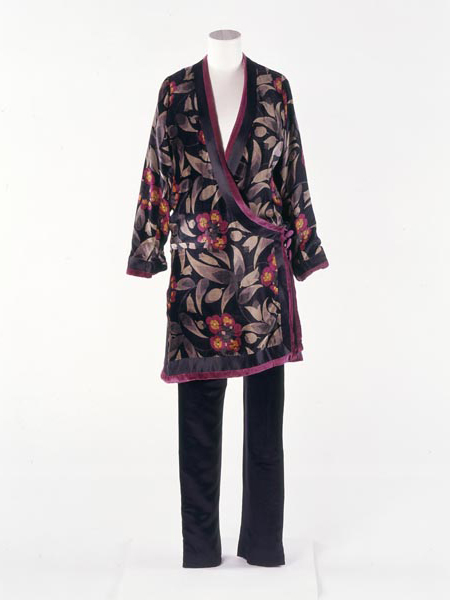
Black silk satin trousers and silk kimono worn by Hilda Moore
Designed by Lady Victor Paget 1927; ID no. 68.143b
How do pyjamas come into all this? Jennings describes Hilda Moore in her role as Deborah Kane as a ‘pyjama-clad vamp’ while The Times (31 January 1927) mentions ‘trousers of black satin’ as well as ‘jealousy smouldering or flaming in the eyes’ and ‘alcohol lapping in tumblers’. The satin trousers are the very same ones you can see in the accompanying image. They were combined with a kimono-style jacket of printed silk velvet, both in our wonderful costume collection. The ensemble was made by the society shopkeeper Lady Victor Paget (1892-1975) who really demands an article all for herself.
So why did Hilda Moore always have to wear pyjamas? The clue might be in Jennings’ description of her acting style. He wrote that unlike the stiff Miss Moyna Macgill playing Lady Marlay, Hilda Moore could not ‘help trying to be more modern or natural’. Miss Moore’s particular kind of pyjamas were themselves very modern having only appeared a few years earlier. They pyjama of the 1920s was not meant to be worn in bed. In its beach version it was destined to be paraded at the Lido in Venice (or at the British coast if that was not possible) and in its lounging or hostess version was supposed to be used to receive guests. Harrods advertised some lovely examples in in 1923 and 1925.
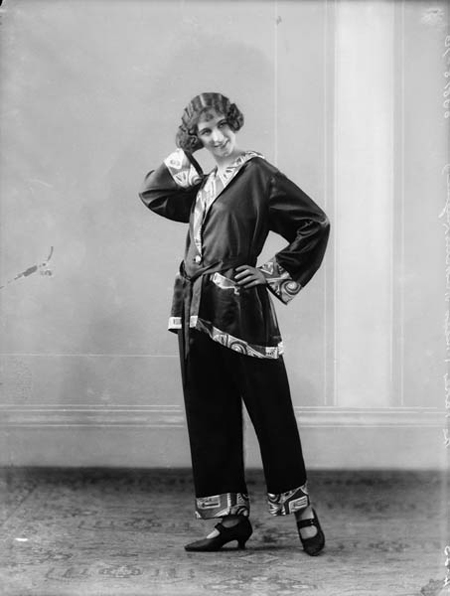
A woman models pyjamas for Harrods
Photograph by Bassano Ltd., 1923. ID no. IN10282
Pyjamas were so popular in the fashionable sea resort of Juan-les-Pins in 1931 that a journalist renamed it Pyjamapolis. Pyjamas were an appropriate ‘costume’ for a fictional character representing a modern woman who was not afraid to be fashion-forward and lived outside the mainstream (I guess that is a fair description for a blackmailer?). Maybe this was a role Hilda Moore specialised in. About a year earlier she had appeared at the Comedy Theatre as the bohemian Margot in Half a Loaf which Jennings had also reviewed, describing Hilda Moore’s role as that of an ‘exquisite dark-haired person without a smile’ (The Spectator, 20 November 1926). In this sketch for the Bystander Magazine, held at the V&A, Hilda/Margot is depicted doing what the pyjama was ideal for: lounging.
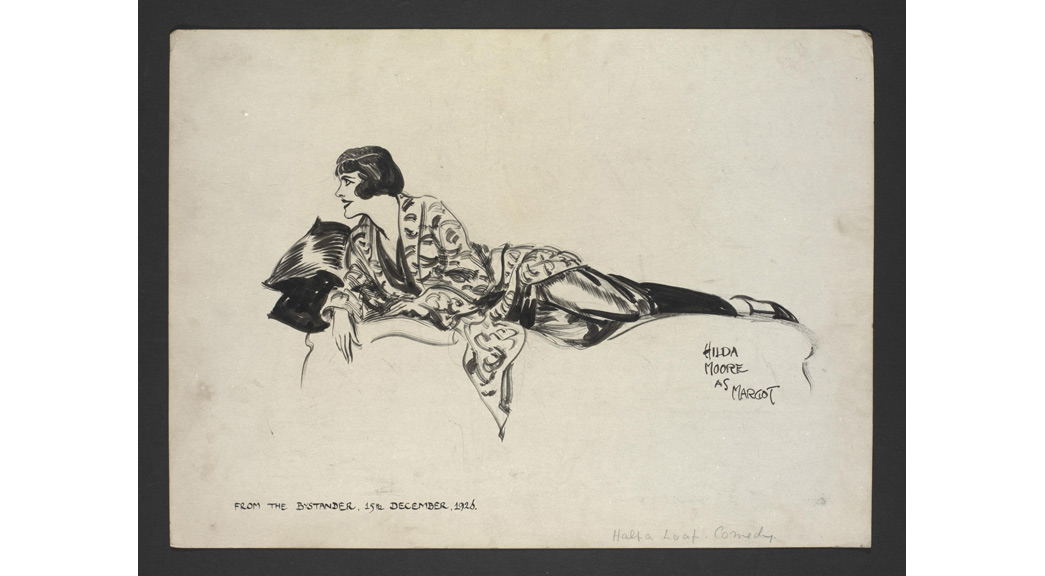
Sketch of Miss Hilda Moore
Drawn by William Kerridge Haselden, 1926, for the Bystander Magazine. © Victoria and Albert Museum, London.
Only two years after appearing in Interference Hilda Moore died prematurely (she was in her early 40s) of a streptococcal infection in New York where she rehearsed a play. The pyjamas she had worn were donated to the Museum of London in 1968 by Evelyn Mercy Moore (1890-1972), Hilda’s younger sister and an actress as well.
You can browse more beautiful photographs of extraordinary fashions from the interwar period in our collection of Bassano fashion photography, documenting clothing and accessories shot at the studios of Bassano Limited in London between 1912 and 1945.
Love fashion? Subscribe to our free fashion newsletter to read more stories from our collections, and see upcoming events and exhibitions.








